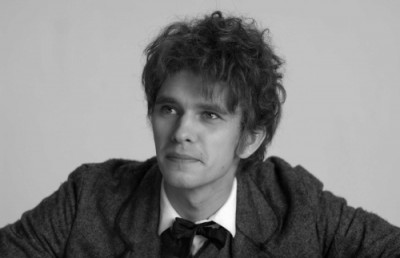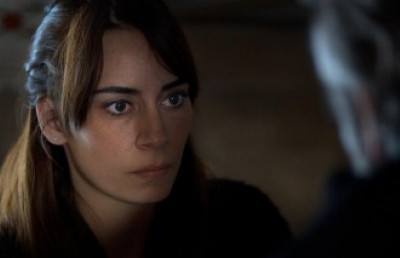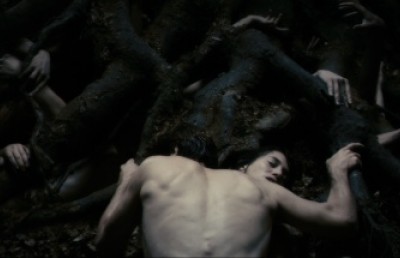Death, time and the possibilities of renewal in Carlos Reygadas’ Silent Light and Carl T. Dreyer’s Ordet
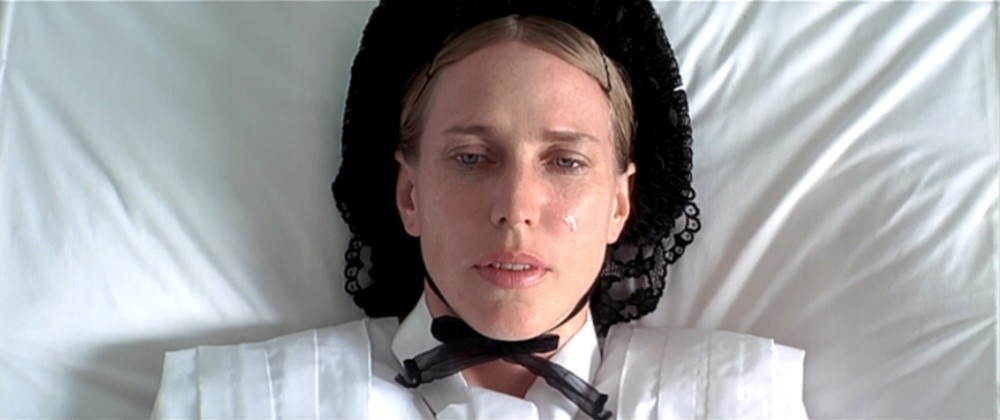
The basic texture of our reality is time; to live is to experience the passing of time. Since Kant’s outlining of the basic epistemological structures that frame all of our experiences, we have learnt to think of ourselves as conditioned by our sense of time. If cinema is an art form that presents our humanity to us in an intimate way, showcasing our desires and fears, then it has to deal, explicitly or implicitly, with the theme of time and how we intuit its flow. A film can represent an objective and communal experience of time or a subjective, interiorized perception of time where past, present and future are not seen as discrete blocks, but blend and meld together. Indeed, a character’s narrative coherence is based on his experience of time; as the empiricist John Locke points out, memory unites the otherwise fragmentary perceptions of the self in a chronological manner. Given cinema’s close association with time, how can film represent a complete rupture in the fabric of time itself? More pertinently, how does a film deal with death as the complete cessation of time and meaningful experience? More implausibly, even if all art requires some degree of suspension of disbelief, how can film subvert our basic experience of reality by turning back time in the transition from death to life?
Carlos Reygadas’ fourth film Silent Light (2007) requires such a leap of faith on the part of its viewers, in the miraculous resurrection of Esther (Miriam Toews) at the film’s end. Through a reading of the film, I will demonstrate how Reygadas succeeds in making this moment work by his juxtaposition between two different modes of time in the film: the cyclical, repetitious mode of Nature and God that intimates eternity, and the linear, sequential mode of humanity’s experience of time. I argue that the film contrasts these two modes of time to emphasize how Man, through sin and folly, has been separated from Nature and the healing influence of the divine. Esther’s resurrection from the dead at the end of the film can thus be read as a return to a state of grace where human rhythms and ways of being can be reconciled with Nature. However, Reygadas’ pietistic and pantheistic sensibilities ultimately present a false picture of existence, as the viewer is left with only a tenuous sense of transformation at the end of the film. This essay will next compare Silent Light to Carl Dreyer’s film Ordet (1955) to suggest how Dreyer’s radical interpretation of a similar resurrection scene demonstrates an existential uneasiness about the return to life and the immersion in the stream of time again, something that Reygadas merely escapes from.
Silent Light opens with an extraordinary shot of the night sky. For a few minutes, the viewer is treated to an unbroken shot of the stars that hang in the sky, light emanating from them towards us. This shot sets up the dynamic that will be played out in the rest of the film: light, a symbol of divine presence, penetrating and illuminating all of existence. Slowly and imperceptibly, night gives way to daybreak as light gradually fills the frame. The transition from night to day is presented as both natural and wonderful. Reygadas wants to focus our attention on how light gives rise to a new day, and how this process is nothing short of awesome and miraculous. The arrival of light simultaneously marks the passage of time as a new day dawns, and the possibility of time’s renewal as cyclical repetition. In the portentous use of the symbols of light and darkness, Reygadas invokes the biblical imagery of Genesis to suggest the birth of new life through a Creator who sustains all of his creation. Through the opening scene, the miraculous nature of life is meshed with the everyday, as if prefiguring how Esther’s own resurrection is as mundane and uneventful as the dawn of a new day.
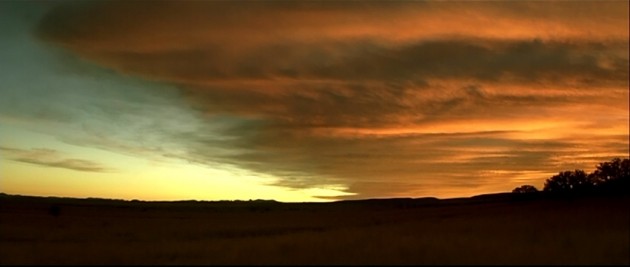
Opening shot of Silent Light
As the camera moves from the macrocosmic grandeur of the heavens to the microcosmic realm of the human characters, the film sets up a dialectic between the natural world and the human world. We next see a family at morning prayers, their reverential silence interpenetrating with the silence of Nature. The head of the household is a man called Johan (Cornelio Wall), who is married to Esther. As Esther and the children finish their breakfast and are about to head out of the house, Johan says that he wants to sit for a while more at the dining table. As the house becomes empty, the camera focuses squarely on Johan. After a while, he breaks down and sobs inconsolably to himself. We learn later that Johan is racked with guilt over his illicit affair with another woman, Marianne (Maria Pankratz). What is worse is that Esther has known about the relationship from the start, and thus hides her anger and shame within herself. The harmony of the natural world is juxtaposed to the divisions and unfaithfulness within Johan’s family. Indeed, Johan’s own moral and spiritual being is trapped in an impasse, between desire for Marianne and love and responsibility towards Esther and his children. Because of his inability to choose between Esther and Marianne, there is no possibility of renewal and transformation for Johan. Time stands still for Johan, as he sinks further and further into ennui and sterility. In contrast to the passage of time in Nature which brings about the possibility for rejuvenation and, later on in the film, resurrection, Johan’s own deathliness within himself is aptly represented by the complete stoppage of time.
Indeed, Reygadas foregrounds this point in an astonishing scene. Johan, tortured by his situation and needing advice, visits his parents at their cowshed. We first see the dim interior of the cowshed are being milked by Johan’s father. After Johan enters the shed and requests to speak to his father, he suggests that they go outside to talk. As they leave the shed and venture outside, the film presents us with a shocking change of scenery: it is now winter outside the cowshed. This interrupts the narrative flow of the film, as nothing in the previous scenes have prepared us to this completely abrupt transition in the seasons. Although unexplainable logically, I argue that Reygadas has presented an utterly convincing correlative to Johan’s psychological state. The viewer sees Nature at its most barren and deathly: there are no signs of life around the landscape. Inner and outer states of being cohere for once in the film: just as Johan’s soul is incapable of resolving his crisis, time has also come to a standstill in the outside world. The almost violent interruption of narrative logic signals Reygadas’ attempt to represent a rupture in the natural flow of time and the flow of time in nature. For Reygadas, this eruption of winter points to death as the absolute stoppage of the passage of time. It is no accident that the whiteness of the surroundings at this point of the film is similar to the whiteness of the walls of the room where Esther is later laid in together with the coffin. Death tears apart the fabric of our existence, introducing absence and discontinuity into our experience (of time) itself.
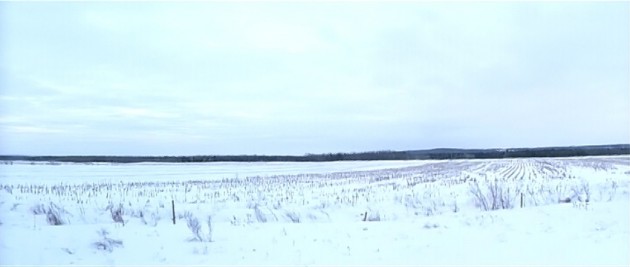
White Spaces: Outside the Barn
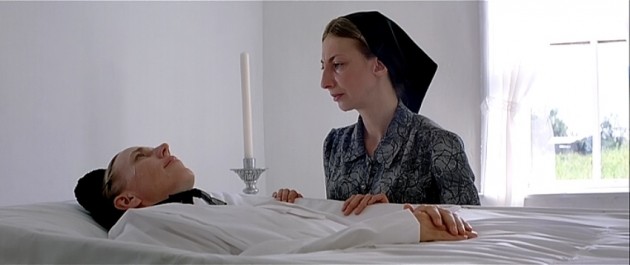
White Spaces: The Room (Esther and Marianne)
For Johan, moral regeneration is only possible when a choice is made: Johan’s friend tells him early on in the film that he has to be “strong” and find his “natural woman”. Curiously enough, it is Marianne who makes that choice for him, allowing him to reintegrate into his community. During their last meeting, their lovemaking constitutes for Marianne a repudiation of her own desire for him. Filled with growing revulsion with her body (“I smell of sex”, she says), she urges him to go back to Esther as “peace is stronger than love”. Marianne thus holds out the possibility for a renewal of time for Johan, as her effacement allows him to rebuild his bonds with his wife and children. Johan’s regeneration seems to be complete when he parts with Marianne and joins his children at the back of a van to watch television. Reygadas sets the next scene in Johan’s household, showing Johan together with Esther and his children in a setting very similar to the opening of the film. Johan’s temporary renewal as proper head of his household thus parallels the dawning of a new day. However, he vacillates once again, telling Esther that he has been to see Marianne. This breaks the cycle of renewal and introduces tragic causality – devastated by the news, she suffers a heart attack and is later pronounced dead by the doctor. Esther’s death destroys the possibility of renewal, and drives home the point that our human experience of time is linear and sequential
With Esther’s death, time seems to have stopped in Johan’s household, as Reygadas presents the viewer with clocks that are not running and static tableaus of the mourners gathered in the living room. Johan himself wishes that things could go back to the way they were beforehand and that time could rewind. At this point of the film, the natural world and the human world stand at their most divided: the lusciousness of the natural scenery outside the house seems to mock the human tragedy inside. However, Reygadas bridges this divide with the miraculous resurrection of Esther. Human time can be renewed, and there is life after death just as there is spring after winter. Human rhythms and natural rhythms can be reconciled, as a healing unity is achieved. The transition from death to life flows just as naturally as night to dawn.
However, it is significant that this miracle happens as a result of Marianne’s intervention. Through her ‘contact’ with Esther, she returns Johan’s desire back to its ‘proper’ object. One might accuse Reygadas here of being phallocentric, as it is the effacement of ‘improper’ desire that allows for the rebirth of marital and familial love. Indeed, Esther’s first question upon reawakening is whether Johan is all right, and Marianne replies in the affirmative. Notwithstanding the sense of calmness in a providential Universe that suffuses the film at the end, we are left with a sense of uncertainty over its over-tidy conclusion. There is no indication about whether Johan has been transformed and reformed by his experiences; there is every possibility that he can and will slip back to his old infidelities. The film denies us a glimpse of their interaction after he realises she has risen from the dead, instead forcefully cutting to tranquil shots of the trees and stream outside their house, before showing the reverse transition from evening to night. In its eagerness to press home the synchronicity between Man and Nature, Reygadas shies away from exploring the implications of the transition from death to life, arguably a very different thing from the transition from night to dawn. For an answer as to what the renewal of time could mean, it is useful to turn to a similar resurrection scene in Carl Dreyer’s film Ordet, shot more than 50 years before Reygadas’ film.
Due to the tonal similarities of the resurrection scenes in Silent Light and Ordet – both take place in a large, pristine white room with the coffin dominating each frame – there is a case to be made for comparing these two films as examples of religious films. However, I argue that Dreyer interprets the resurrection scene in a radical way, suggesting not calmness and reliance in God’s providential love, but instead weariness at the prospect of being thrust back into time.
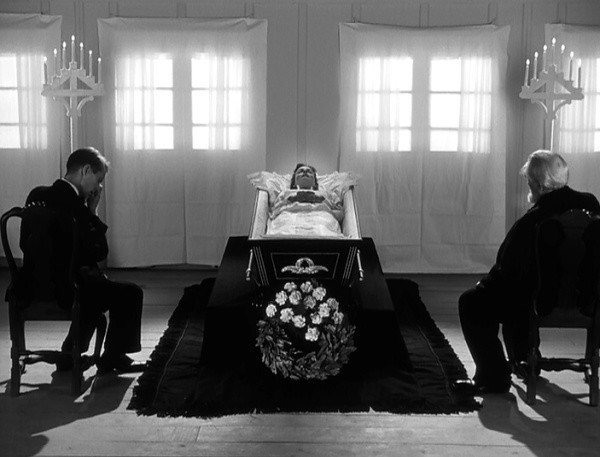
Ordet‘s Resurrection Room
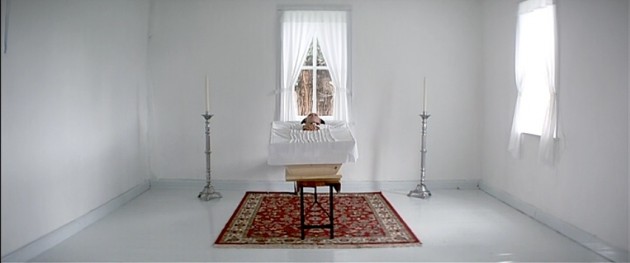
Replayed in Silent Light
In contrast to Reygadas’ implicit trust in the power of renewal, Ordet demonstrates how time results in a gradual atrophy of faith and human relationships. In the film, Christianity has fractured into the acrimonious tension and in-fighting between the Borgen household and the Petersen household. Due to Morten (Henrik Malberg) and Peter’s (Ejner Federspiel) refusal to come to terms about the correct interpretation of Christian doctrine, the relationship between their children Anders (Cay Kristiansen) and Ann (Gerda Nielsen) is threatened. More starkly, Morten’s attempt to, in his opinion, ‘renew’ Christianity by urging his son Johannes to study theology has resulted in him going insane, believing himself to be Jesus Christ. For Johannes (Preben Lerdorff Rye), this absolute fixation on Christian scripture betokens a complete cessation of time as meaningfully lived, as he futilely repeats the words of Christ to a disenchanted audience who will not believe in his ambiguous wisdom. Buried in their private obsessions about religion, Morten and Peter cannot breathe life into their own families by engendering new hope into their existences.
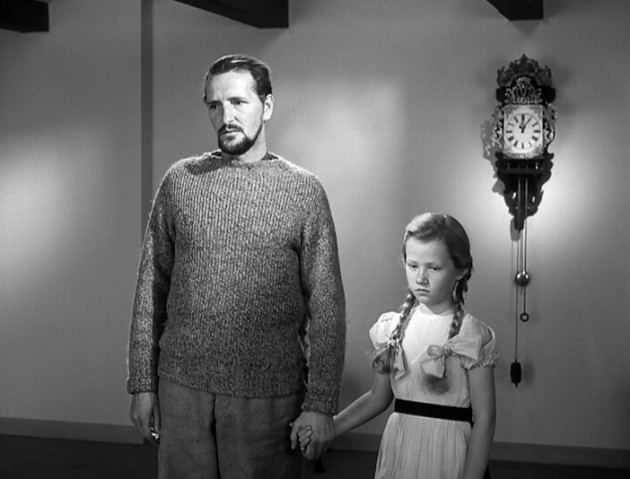
Johannes with niece Maren in Ordet
It is Inger (Birgitte Federspiel) who represents the hope for regeneration, as she is pregnant with her third child. In counterbalance to the sterility seen in the masculine characters, Inger provides a model of feminine fertility and productivity. She is also an example of saintliness, as her pious Christian faith is contrasted against Mikkel’s proud atheism. Furthermore, Inger’s ardent belief in miracles undergirds her notion of God as the Creator who sustains life and intervenes in human affairs for the good of his creation. However, as against this belief, the new pastor proclaims his scepticism towards miracles, and the doctor who treats Inger asks Morten whether it was God or his skill as a doctor which initially keeps Inger alive. What is dramatized in Dreyer’s film is an attitude of metaphysical uncertainty towards God and his presence in the world. As opposed to Reygadas’ pantheistic sensibilities about Nature illuminating divine radiance, Dryer portrays a God who remains distant and silent from his creation.
Indeed, with the life-threatening situation that Inger faces, all characters in the film are forced to re-evaluate their ideas of God as an omnibenevolent deity. During Inger’s difficult labour, Morten insists that his whole family pray to God for the safety of mother and child. However, his unwavering faith in God’s providence is mocked when he finds out that Inger’s child has been taken out of the womb in four pieces. As he is shattered by this terrible blow, there is barely time to recover before discovering that Inger has passed away also. There seems to be no reason or logic behind the tragedy that befalls Inger, excepting Peter’s callous notion of a vengeful God who punishes Morten through Inger for being stubborn and not converting to their faith. There seems to be no redemptive quality behind Inger’s suffering and death. As with Silent Light, the death of an essentially good character confronts us with the question of why good people suffer, and puts the notion of a providential Creator in question. In contrast to how Reygadas responds to this by having us make an imaginative leap of faith into a fantastical prelapsarian unity between Man and a lost Eden, Dreyer seems less sure of the answers that make sense in a world best with uncertainty and the arbitrariness of fate.
For Morten and Mikkel (Emil Hass Christensen), Inger’s death represents nothing less than the total collapse of meaning. The world of the film comes to a complete standstill, visually emphasized by the stoppage of time in the clocks of the Borgen household. If Esther’s death opened up a void in Silent Light, Inger’s death creates a complete abyss into which characters gaze at the absence of God and all transcendental values. By this time in the film, all the characters have to hold on to in the face of such nihilism are the crazed words of Johannes that he will raise Inger back to life. Inger is mysteriously resurrected from the dead, and we might be tempted to conclude that Dreyer validates Inger’s religious faith and belief in God, especially when that miraculous occurrence is accompanied by the reconciliation between Morten and Peter and the approval of Ann and Ander’s (Cay Kristiansen) marriage. However, when Inger asks Mikkel about her baby after she awakens, Mikkel tells her that it is with God. Inger’s resurrection is thus accompanied by the terrible knowledge that she has lost her child. For Inger, things can never return back to normalcy, and the return from death to life also signifies a return to a world of pain, loss and heartbreak.
All these conflicting emotions are startlingly captured by Dreyer in the remarkable final moments of the film. As Mikkel holds her and says that he has found her faith, the camera captures Inger’s gaze as she stares into space and enunciates the word, ‘Life’. It is a look that ambiguously expresses joy and uneasiness, optimism and weariness at the return to life. Inger has intuited a deeper truth about life than Mikkel’s pseudo-religious awakening – thrust once again into the flux of time, Inger has to shoulder her existential burden in a world where God’s relationship to Man seems arbitrary and inscrutable. Dreyer implies that a return to life can never be as simple as a transition back to a state of innocence and complete regeneration. Instead, it is a transition back into the limitations of mortality. For Inger, existence has now become questionable: in Heidegger’s terms, Inger’s experience of Death represents an encounter with the Nothing that allows an individual’s existence to appear uncanny and disquieting.
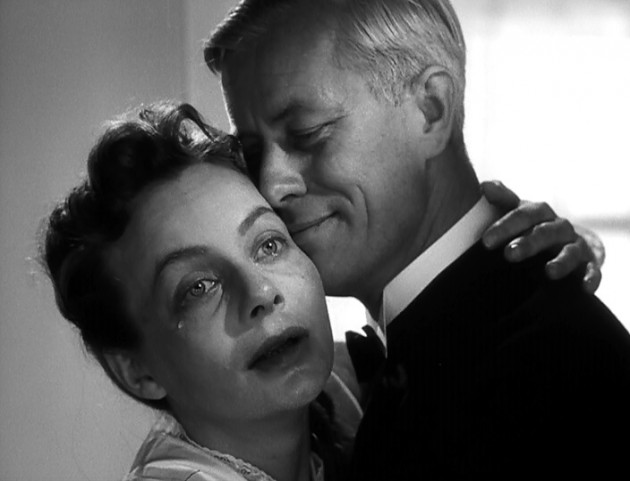
“Life…..”
In conclusion, I argue that both Reygadas and Dreyer try in their films to dramatize those impossible moments where our basic experience of time is disrupted, firstly through absence and death, secondly through the turning back and renewal of time in an individual’s resurrection. For both filmmakers, resurrection ultimately becomes a metaphor for the relationship between humanity and temporality, with death becoming an integral part of our phenomenology of time. However, Reygadas’ general vision of a renewed experience of life and time does not fully explore the true implications such a return to existence might entail. It is Dreyer who invites us to look more closely at the joys and horrors, triumphs and failures of a human existence that is lived, and resumed, in time.



